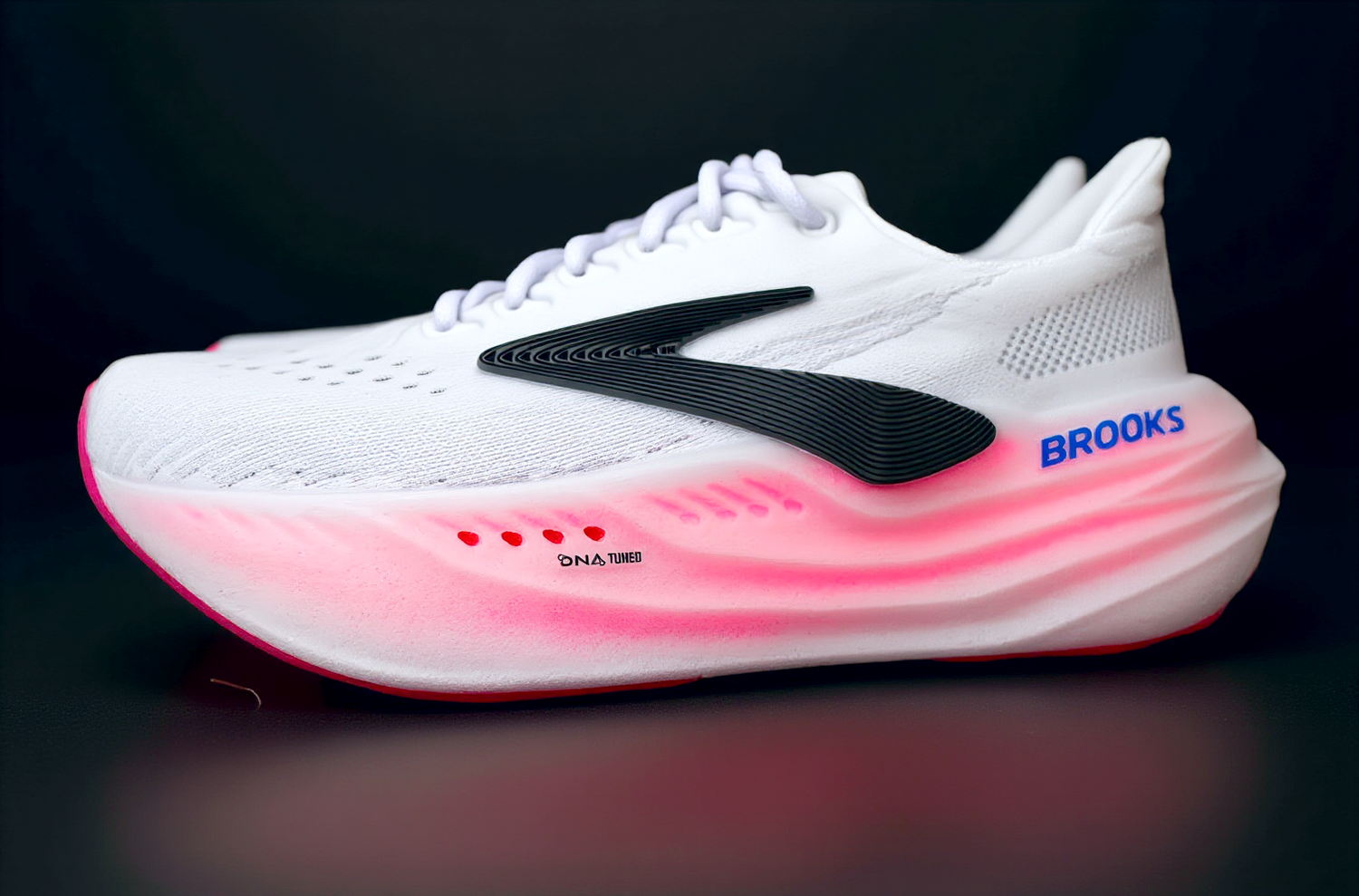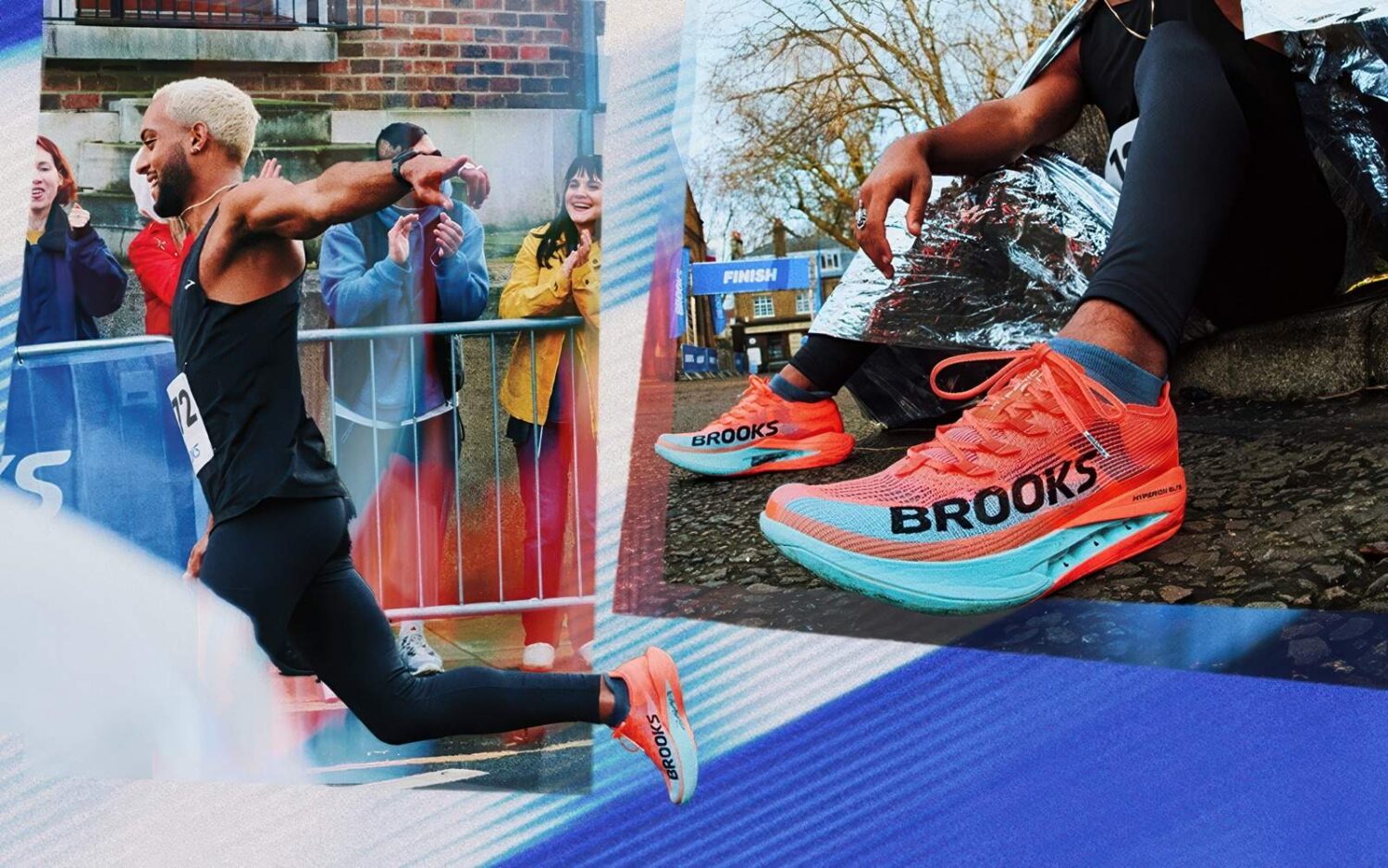Brooks Glycerin Max Review: The Ultimate Max Cushion Running Shoe for Comfort and Stability in 2025

The Brooks Glycerin Max has emerged as a standout contender in the ever-growing world of max cushion running shoes. Launched in late 2024, this shoe represents Brooks’ bold entry into the high-stack trend, blending innovative technology with the brand’s signature stability and comfort. Priced at £180 ($200), it’s a premium option aimed at runners seeking plush protection for easy runs, recovery days, and long-distance efforts. In this in-depth review, we’ll explore every facet of the Glycerin Max—from its cutting-edge midsole to its spacious fit—while offering insights for both casual joggers and seasoned marathoners. Whether you’re eyeing this shoe for your next training block or curious about how it stacks up against competitors, this comprehensive guide has you covered.
🏃♂️ Introducing the Brooks Glycerin Max: A New Era of Cushioning
The Glycerin Max takes the beloved Glycerin line—long a staple for cushioned daily trainers—and elevates it to new heights, literally and figuratively. With a towering stack height and a fresh midsole foam, it’s designed to deliver maximum comfort without sacrificing the smooth, stable ride Brooks is known for. Released on October 5, 2024, this shoe caught many by surprise, slipping under the radar before earning widespread acclaim from runners and reviewers alike.
At its core, the Glycerin Max caters to those who prioritize leg protection and a plush underfoot feel over speed. It’s a cruiser, not a racer, making it ideal for easy miles, recovery runs, or long efforts where comfort trumps pace. But does it live up to the hype? Let’s dive into the details.
🔧 Technical Breakdown: What Makes the Glycerin Max Tick?
Brooks has packed the Glycerin Max with innovative features that set it apart from its predecessors and competitors. Here’s a deep dive into its construction.
🧪 DNA Tuned Midsole: Nitrogen-Infused Innovation
The heart of the Glycerin Max is its DNA Tuned midsole, a nitrogen-infused foam that marks a significant evolution from the DNA Loft V3 found in earlier Glycerin models. This supercritical foam uses a dual-cell structure:
- Heel Zone: Larger cells provide a soft, airy landing, ideal for heel strikers or those seeking impact absorption. This plushness cradles the foot, reducing fatigue on long runs.
- Forefoot Zone: Smaller, denser cells offer a responsive toe-off, adding a subtle spring to each stride. While not as bouncy as some super foams (think ASICS FF Blast+), it strikes a balance between cushioning and energy return.
Unlike traditional dual-density midsoles with fused layers, DNA Tuned is a seamless, one-piece construction. Brooks starts with a small “puck” of material that expands during the nitrogen infusion process, creating distinct zones without adhesives. This results in a smooth transition from heel to toe, enhanced by the shoe’s pronounced Glide Roll rocker geometry.
- Stack Height: 45 mm (heel), 39 mm (forefoot)
- Drop: 6 mm
- Weight: 307g (10.8 oz) in US men’s size 9
The midsole’s stiffness—despite lacking a carbon plate—adds to its stability, making it a reliable choice for runners wary of squishy, unstable max-stack shoes.
👟 Upper: Plush Comfort Meets Spacious Design
The Glycerin Max sports an engineered mesh upper that’s both breathable and plush. Key features include:
- Padding: Thick cushioning around the heel collar and tongue ensures a luxurious step-in feel. While the tongue isn’t gusseted, its padding keeps it in place during runs.
- Fit: True-to-size with a roomy toe box, offering ample wiggle room for toes. This makes it a potential fit for runners with wider feet, though no official wide sizes are available.
- Lockdown: Traditional lacing provides a secure fit, though some runners note the need to cinch it tightly due to the upper’s volume.
The upper’s design echoes Brooks’ Hyperion line, blending style with function. However, its spaciousness may feel excessive for those with narrow feet.
🛡️ Outsole: Durability and Grip for the Long Haul
The Glycerin Max’s outsole is a thick layer of rubber strategically placed for durability and traction:
- Coverage: Full rubber in high-wear areas (heel and forefoot) with exposed midsole elsewhere to save weight.
- Grip: Excellent on dry roads, brick, and wet surfaces like wooden decking. Wet weather testing is limited, but initial reports suggest solid performance.
- Durability: After 100+ km (62+ miles), testers report minimal wear, suggesting this shoe can handle 500+ km (310+ miles) with ease.
Vertical flex grooves in the forefoot enhance rigidity rather than flexibility, complementing the rocker for a smooth roll-through.
📏 Fit and Sizing: Roomy Comfort for All?
The Glycerin Max is a true-to-size shoe with a broad, accommodating fit. Here’s what runners can expect:
- Toe Box: Spacious and airy, ideal for toe splay or wider feet. Some testers suggest sizing down half a size if you prefer a snugger forefoot.
- Midfoot: Secure lockdown with adjustable lacing, though the tongue may bulge slightly on narrower feet.
- Heel: A structured counter with generous padding prevents Achilles irritation, a common complaint with other Brooks models like the Ghost 16.
Compared to the Glycerin 21 or Ghost Max, the Glycerin Max feels broader and more voluminous, aligning with its max-cushion ethos. It’s a boon for heavier runners or those with tired legs, but slimmer-footed individuals might find it overly roomy.
🏞️ Performance: How Does It Run?
After logging hundreds of kilometers across varied runs—easy jogs, recovery sessions, and long efforts—the Glycerin Max reveals its strengths and limitations.
🛋️ Easy and Recovery Runs: A Plush Paradise
The Glycerin Max shines brightest on slow, relaxed runs. Testers universally praise its comfort:
- Cushioning: The soft heel absorbs impact effortlessly, protecting legs after tough workouts or races. One runner noted fresh legs even after a 30 km (18.6-mile) post-marathon effort.
- Ride: The rocker propels you forward with minimal effort, making 8-9 minute/km (13-14 minute/mile) paces feel “effortless” and “cocoon-like.”
- Stability: Despite its 45 mm stack, a wide platform ensures a controlled, grounded feel—unlike the wobbly Hoka Skyward X.
At 307g (10.8 oz), it’s not light, but the responsive forefoot and rocker disguise the weight, delivering a ride that feels nimbler than the scales suggest.
⏩ Uptempo Efforts: Pushing the Limits
While not designed for speed, the Glycerin Max surprises with its versatility:
- Moderate Paces: At 5-6 minute/km (8-9 minute/mile), the rocker and forefoot pop keep the ride engaging. It’s suitable for marathon-paced long runs or steady efforts.
- Fast Runs: Beyond 4:30 minute/km (7:15 minute/mile), the weight and bulk become noticeable. Testers found it less responsive than lighter options like the ASICS Superblast, preferring it for cruising over chasing PBs.
🏋️♂️ Best for Heavier Runners?
With its robust build and generous cushioning, the Glycerin Max excels for heavier runners (200+ lbs/90+ kg). The foam resists bottoming out, and the wide base enhances stability—a rare feat for a neutral max-stack shoe.
⚖️ Pros and Cons: Weighing the Glycerin Max
✅ Pros
- Unmatched Comfort: Plush upper and midsole make every step a treat.
- Stable Ride: Wide platform and balanced foam defy max-stack instability.
- Durability: Outsole and foam show little wear after 100+ km (62+ miles).
- Versatile Enough: Handles easy runs and moderate paces with aplomb.
❌ Cons
- Weight: 307g (10.8 oz) lags behind lighter competitors like the Superblast (255g/9 oz).
- Price: £180 ($200) is steep for a non-plated trainer.
- Limited Speed: Not ideal for fast workouts or races.
🆚 Comparison: Glycerin Max vs. the Competition
How does the Glycerin Max stack up against other max-cushion contenders? Here’s a detailed showdown:
| Shoe | Weight (US 9) | Stack (Heel/Forefoot) | Drop | Price | Best For |
|---|---|---|---|---|---|
| Brooks Glycerin Max | 307g (10.8 oz) | 45 mm / 39 mm | 6 mm | $200 | Easy runs, recovery, stability |
| ASICS Superblast | 255g (9 oz) | 45 mm / 37 mm | 8 mm | $200 | Versatile cushioned training |
| Puma MagMax Nitro | 298g (10.5 oz) | 44 mm / 36 mm | 8 mm | $180 | Comfort with slight speed |
| New Balance More V5 | 295g (10.4 oz) | 42 mm / 38 mm | 4 mm | $170 | Recovery, walking comfort |
| Hoka Skyward X | 320g (11.3 oz) | 48 mm / 43 mm | 5 mm | $225 | Plush runs (with plate) |
🌟 Glycerin Max vs. ASICS Superblast
- Weight: Superblast wins (255g vs. 307g).
- Ride: Superblast’s FF Blast+ foam is bouncier and more versatile, excelling at faster paces. Glycerin Max prioritizes comfort and stability.
- Use Case: Superblast for all-around training; Glycerin Max for easy/recovery days.
🌟 Glycerin Max vs. Puma MagMax Nitro
- Ride: MagMax’s nitro foam feels firmer and slightly faster, while Glycerin Max is softer and more forgiving.
- Fit: Glycerin Max offers a wider toe box; MagMax is narrower but available in wide sizes.
- Value: MagMax’s $180 price edges out Glycerin Max’s $200.
🌟 Glycerin Max vs. New Balance More V5
- Purpose: More V5 leans toward walking and ultra-soft recovery; Glycerin Max adds responsiveness for running.
- Durability: Glycerin Max’s rubber outsole outlasts More V5’s softer design.
🌟 Glycerin Max vs. Hoka Skyward X
- Stability: Glycerin Max feels more controlled; Skyward X’s plate and height can feel unwieldy.
- Price: Skyward X’s $225 (with a plate) overshadows Glycerin Max’s $200.
🔄 Where It Fits in Your Rotation
The Glycerin Max slots seamlessly into a multi-shoe rotation:
- Easy/Recovery Shoe: Pair it with a daily trainer (e.g., Brooks Ghost 16) and a racer (e.g., ASICS Metaspeed Sky).
- Long Run Option: For marathon training, use it for slow long runs, complemented by a tempo shoe (e.g., Hyperion Max 2) and a plated racer.
- One-Shoe Runner: If comfort is your sole priority, it’s a solid all-rounder for casual running up to marathon distances—at slower paces.
💭 Verdict: Is the Glycerin Max Worth It?
The Brooks Glycerin Max is a triumph of comfort and stability, redefining what a max-cushion shoe can be. Its DNA Tuned foam delivers a plush yet responsive ride, while the wide platform ensures confidence on every step. It’s a standout for easy days, recovery runs, and long efforts, especially for heavier runners or those with tired legs. At £180 ($200), it’s pricey, but its durability and quality justify the cost for the right buyer.
However, it’s not a do-it-all shoe. Lighter, bouncier options like the ASICS Superblast outshine it for versatility, and budget-conscious runners might prefer the Glycerin 21 or Ghost Max 2 at lower price points. If you crave maximum cushioning with a touch of energy—and don’t mind the weight—this is one of the best Brooks shoes yet.
Whether you’re lacing up for a jog or a marathon, it’s a shoe that promises comfort in spades—just don’t expect it to set any speed records.
Copyright © 2025 WhateverRun.com



